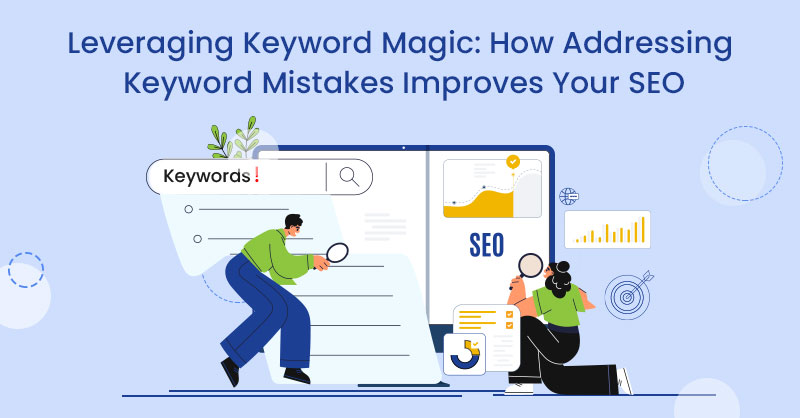As a full time SEO Specialist, I often discuss the concept of "user experience" (UX for short) with my clients. Not to get confused, UX is a completely different field from search engine optimization, but the two specialties are very closely related -- creating the best user experience possible should be the core focus of both.
Whether it is writing the most useful article about a certain topic, or ensuring that your eCommerce system is easy to use, it is important to make sure site visitors have a positive experience, because only then will they stick around.
In addition to meeting the needs of the user, UX is also important for SEO because it is what Google recommends as a best practice for ranking. And this is just good business for Google. After all, if people find sites they enjoy through Google, they will continue to use this search engine.
"Part of Google’s philosophy has always been focused on delivering the best user experience." - Search Engine Land
Creating a positive user experience is more than just following intuition. If you want to know how your site visitors feel about your content, you need to look at the data. The Google Analytics platform can give you several different user experience metrics at the page or site level:
- Bounce Rate
- Average Time On Page
- Pages Per Session
However, these metrics don't necessarily tell the whole story. For instance, a low average time on page is not always a bad thing, depending on the page. Say you develop a really great landing page for one of your service offerings, and ensure it's targeted for high-intent terms ('I want to buy'). People land on the page through the search engine results pages (SERPs) and then immediately take action. This is great! However, you will likely see a pretty minimal time on page metric. Users come into the site through this page, immediately find exactly what they are looking for, sign up or buy something, and then they are well on their way.
That is why pure on-page metrics are not necessarily the ‘end all be all’ of user experience testing. It is important to understand first what your company’s goals are, then do research to determine what the user wants, the intent behind their Google search query, and what they need in order to make a decision.
This is why Google has launched their new "Mircomoments" project. This project addresses the fact that different types of search terms mean that users want to find different types of information, and it's important that SEOs and content creators are aware of this.
How To Focus Your Content On User Intent or “Micromoments”
Once you understand what a user might be looking for when searching for a certain term, the next step is to tailor your content and on-page optimizations to fit the needs of the searcher. Google is displaying several different types of results in the SERPs, and these different layouts are directly related to their perceived search intent:
- “I want to know”
- Users who want to find out the answer to a question or learn something new. Content should be in-depth articles, lists, and tables that would be elligible for a quick answer result
- “I want to go”
- Local terms where users want to find the exact address or phone number of a particular activity or destination. Marketers should focus on Local SEO and ensuring the optimization of their Google My Business listings.
- “I want to buy”
- Ads Ads Ads. Consumers want to buy a product, compare prices, and look at pictures of what they are going to buy. There is often less "opportunity" in the SERPs for organic listings, as they are pushed down by ads. Use product schema to make your result stand out -- display price, star ratings, reviews, and images directly in the SERPs for your product pages.
- “I want to do”
- Searchers are trying to find more information on the activity they're trying to accomplish, whether it be trying a new recipe or building a table by hand. Content should reflect "how to" articles, and step-by-step guides, making them eligible for quick answer results.
Using these search intent layouts, SEOs can anticipate the intentions of the user while they create and optimize their content. But once you know what your content focus should be, there are still many other factors that come into play when discussing user experience, often relating to design.
Testing Your Pages To Find The Best UX Layout & Design
The hesitation in discussing UX with clients for many professional SEOs is that these are two separate processes. People study design and user research tactics for years before landing a top position as a UX Designer, so SEOs can't pretend to understand the entire industry when making recommendations. However, UX can be boiled down to ensuring that any piece of content, landing page or app takes into account the key factors that influence UX: your content must be useful, usable, desirable, valuable, findable, credible, and accessible.
Now you might be saying to yourself "Obviously! I want all of my articles and pages to be all of those things!" And of course you do, everyone wants their site visitors to have the best experience possible on their site so that they stay on for longer and keep coming back for more! But the tricky part with UX Design is that what is best for one site will not necessarily be best for every other site. And, what worked for your site last year might not necessarily keep working this year. As we all know, the Internet is an ever-changing ecosystem that is constantly shifting based on new technological updates, as well as what people are looking for and trying to use it to do.
Therefore, proper UX Design requires a long-term attention to detail, testing and tweaking elements over time in order to improve the on-page metrics you are focusing on. Additionally, to truly understand the results of changes to each element, only one change should be made at a time (meaning this is not a ‘one and done’ process).
There are several different tools you can do to see how users are interacting with your site, such as HotJar, Crazy Egg, and Optimizely. These tools can record user sessions, take heatmaps of scrolling, and track mouse movement. Using these tools help UX designers to determine where users spend the most time on a page, and what might not even be seen at all by users.
It's important for every SEO to have a strong understanding of UX Design and best practices. After all, both industries are trying to achieve the same goal -- provide the best experience for the user so that they will convert, and then keep coming back to the site. The only difference is that SEOs track their performance through Google organic rankings. But -- in a sort of ‘chicken and egg situation’-- the SEO rankings are directly affected by proper UX Design because Google's algorithm is using on-page metrics and engagement to choose which sites to rank.
To sum it all up, Digital Marketing and SEO agencies (as well as businesses that invest in digital marketing) should ensure that their SEO teams have the resources necessary to stay up to date on all of the best practices for UX design. After all, the perfect combination of the two will ensure that users find your pages in the search results, have a great experience that they convert, and keep returning to the site because they found it so helpful.






on
“A Match Made in Heaven” Thanks For This Post !!!
on
Nice write up. This line pretty much sums it up. “factors that influence UX
: your content must be useful, usable, desirable, valuable, findable, credible, and accessible.” Well written
on
Thank you for the wonderful article. It’s 2017, and there’s no other genuine way to master in SEO besides aiming at improving the user experience and providing them what they are looking for.